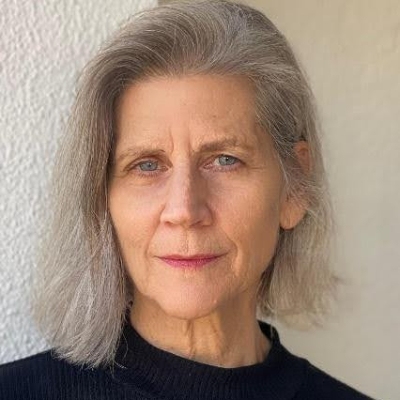Editor’s Note: The article we publish below originally appeared in the Spanish edition of Letras Libres, Vol. 24, No. 280 (January 2025). We wish to thank Daniel Gascón, editor of Letras Libres in Spain, for allowing us to share this text with LALT’s readers.
Seeing the trends and currents that appear in literature, or in other artistic fields, requires time and distance, a bit of a bird’s eye view. Doing it on the fly is like trying to predict what the weather will be like in a couple of weeks by looking at the past. So I apologize in advance.
To think that movements and schools of thought or of art begin with the century is a little naïve. But it’s happening with this change of century and millennium that went from certain relief over the fallacy of the effects from Y2K to the tragedy of 9/11, which marks the beginning of the twenty-first century. The attacks on the Twin Towers had consequences for world geopolitics and showed the vulnerability of the most powerful country in the world, which until then seemed untouchable. This had an immediate effect on literature: novels about the attack, about survivors, etc.; and also a long-term effect: collective trauma—which later, mixed with certain elements, has led to literature about intimate trauma that I would say is close to being exhausted, at least the literature that places its worth in the scope of the tragedy. Since then there have been global events that have marked the evolution, from the development of the Internet and social media to AI, climate change, a pandemic… All of this has been reflected in the books that are written and those chosen to be read. Despite the attack on the Twin Towers, we can see a period of general optimism up to 2008, the year of the Lehman Brothers crisis.
One of the characteristics of the twenty-first century is that globalization has expanded: everything is global and increasingly more global. At the same time there has been a democratization of writing, facilitated by technology (from blogs to self-publishing), and also of knowledge. We have to go back to the beginnings of the Internet when we still believed, utopianly, that it would be something like the Library of Alexandria, oblivious to the fact that what something artificial is most going to resemble is reality itself. So more books than ever are being written, and the prescription has also been democratized: book clubs, blogs with recommendations, video reviews (a sub-genre I found by chance is the wordless review, not with sign language but with mime) also confirm the atomization of criteria or of the prescription. There are good things about this, such as losing the monopoly, and at the same time, there are negative consequences, such as equating opinion with analysis. The most immediate result is noise and a feeling of over-stimulation. We scream out for a machete with which to cut through the brush, to see if this way we can see both the forest and the trees.
To outline a map of what literature has been thus far this century, we can look at different criteria; the answer will be different depending on where we are looking from, as cultural journalist Andrea Aguilar points out, which is needed for this article. What the newspapers say, awaiting the phenomenon, more literary topicality than aesthetic current, is not the same as what catches the attention of the academy. Awards tell one story, adaptations to the audiovisual genre, another; the academy sets certain milestones, the bestseller lists delineate a different panorama. There are some lines that can more or less be seen from all points of view: a questioning of the canon; the dissolution of borders between genres; the strength of nonfiction; the expansion of the so-called literature on the self; the total victory of the novel as an omnivorous genre. An initial idea: the novel is like capitalism, it absorbs everything, gobbles it up, even the criticism and questioning of its own existence.
Turn of the century
A turn of the century and millennium is not always matched by a change in trends. In fact, in this first quarter century we have said goodbye to some of the writers who marked the narrative of the twentieth century: Saul Bellow, Philip Roth, Toni Morrison, Alice Munro, Martin Amis, Ricardo Piglia, and Javier Marías (Tomorrow in the Battle Think on Me appeared in 1994; the trilogy Your Face Tomorrow between 2002 and 2007, to cite two examples). Some of them still delivered essential and enlightening works within their career, such as The Plot Against America, in the case of Roth. In the Hispanic sphere, although Gabriel García Márquez died in 2014, his career developed in the twentieth century. The case of Mario Vargas Llosa is different, straddling the two centuries for several reasons: The Feast of the Goat, one of his great novels, is from 2000, he won the Nobel Prize in 2010 and said goodbye to the novel in 2023 with Le dedico mi silencio (I Give You My Silence). Among those who walk with one foot in each century we can cite Richard Ford, whose character Frank Bascombe appeared for the first time in The Sportswriter, a novel from 1986, and said goodbye in Be Mine (2023); A.M. Homes, Ian McEwan, Kazuo Ishiguro (Nobel in 2017), Salman Rushdie, and the tireless and lucid Cynthia Ozick, who published a volume of brilliant essays, Critics, Monsters, Fanatics, and Other Literary Essays, in 2016. Infinite Jest by David Foster Wallace (1962-2008) was published in 1996 and The Pale King, a posthumous novel, appeared in 2011. Roberto Bolaño (1953-2003), who lived in the flesh barely three years of the new millennium, is a writer of the twenty-first century as well. Enrique Vila-Matas has been prolific in the two centuries to which he belongs.
At the brink of the turn of the century, Zadie Smith debuted with White Teeth; Michel Houellebecq has two novels that appeared in the last century, Whatever and The Elementary Particles, which put him on the literary map, but he is a twenty-first century writer the like of which there are no longer many: a novelist of ideas who offers a vision of the world and risks causing discomfort. The Virgin Suicides by Jeffrey Eugenides came out in 1993 and in 2002 came Middlesex, a novel narrated by a hermaphrodite—like Orlando by Virginia Woolf—a path later explored in another setting by Gabriela Cabezón Cámara, for example in Las niñas del naranjel (The Girls from the Orange Grove, 2023). Javier Cercas had already been published, but his success arrived with Soldiers of Salamis in 2001. Cercas’s novel exhibits two common features in this first quarter century: on the one hand, it plays with autofiction, as he would in his next novel, The Speed of Light, and it also plays with the dissolution of genres: he talks about his novels as “real stories,” a little along the lines of the work developed by Emmanuel Carrère since The Adversary (2000). Liliana’s Invincible Summer (2021) by Cristina Rivera Garza is also an investigation, in this case into the murder of her sister. There is a gaze toward the past in Fernando Aramburu, Ignacio Martínez de Pisón, and Almudena Grandes. Memory and the question of how it is used to build our identity is found in novels by the Bulgarian writer Georgi Gospodinov, from The Physics of Sorrow (2011) to Time Shelter (2020). It is not so different, save the context, from what Patrick Modiano (Nobel in 2014) does; although I would say that Modiano explores the past from personal tragedy while Gospodinov’s ambition is universal.
This initial review of this quarter century has a Western bias, in part based on my own shortcomings, but it also lets us see the domination of the English-speaking world in the literary market. There is also a bias toward novels over other genres. Here the reason has to do with what literary theorist Luis Beltrán explains: “The novel is a major art because it fulfills the social function of uniting popular culture with higher culture.” Many of today’s adult readers came to literature thanks to J. K. Rowling’s saga, Harry Potter (1997-2007).
Current phenomena
From the point of view of global phenomena, two names occupied the century’s second decade: Karl Ove Knausgård and Elena Ferrante. Two authors of sagas composed of rather long novels. In the case of the Norwegian, My Struggle, a series of autobiographical novels, is a detailed record of his life in six volumes. Conversely Ferrante, with My Brilliant Friend, followed the relationship of two friends, with contrasting fates, while recounting the second half of the twentieth century in Italy. Here the focus is placed mainly on the women’s lives, the relationship with their bodies, and a mise-en-scène centered on social life and how it changed over those years. Their success highlights the appetite that readers, as well as critics and journalists, have for long books.
The Irish writer Sally Rooney stands out as a “phenomenon” among her contemporaries: four novels about the difficulty of communicating, focused on the characters’ emotional and romantic relationships. Also canonized via the audiovisual route, her second novel, Normal People, became a series; for the next ones Rooney said, for the moment, she would not accept offers so that the book could stand on its own for a while. Perhaps Rooney’s novels bore me a bit with their over-explanation of a world I already belong to, so I run the risk of being for Sally Rooney what Mark Twain was for Jane Austen; by the way, the label “Jane Austen of the millennials” fits Rooney quite well. The fact is that the millennials are much less interesting to me than Austen’s women and their financial troubles.
They will all have to pass through the filter of time and then see what’s left. But off the cuff and glancing back a little, it seems that these first twenty-five years have seen the consolidation of noir, and especially Nordic noir, with names like Jo Nesbø, Camilla Läckberg, Larsson, Åsa, and Stieg, which have an aspect of market phenomenon—a place we must also look at, whether we like it or not—within a very long etcetera. Finnish writer Sofi Oksanen made her debut in 2008 with Purge, where she told the story of two women, one of them a victim of white slavery, in Estonia when it was newly-independent from the USSR. The book was translated into thirty-seven languages, and the novel came from a theatrical piece—Oksanen is a playwright—and was made into a film. Audiovisual adaptations also provide an explanation of what we are looking at. The Handmaid’s Tale, a novel published in 1985, became a series in 2017 and made the book current again. The interest it stirred up led Margaret Atwood to write a continuation in 2019, The Testaments. We were in a dystopian moment (The Road by Cormac McCarthy); the difficulty was to imagine utopias, as noted in the essay Utopia is Not an Island by Layla Martínez. Not only as a fantasy but also in the way of approaching reality, as in Disgrace (1999) by Coetzee (Nobel in 2003).
Dystopia seems to be the only path in science fiction; but the work of Ursula K. Le Guin, who died in 2018, disproves this. The return of Le Guin was due to two circumstances: the consolidation of science fiction, and a gaze that looked at what women are writing now but also at what they wrote, and what was overlooked, in their time. There have been retrospective attempts to repair the silencing of women’s public voice, which Mary Beard spoke about in her 2014 essay: Lucia Berlin, Ursula K. Le Guin, Atwood herself, and so many others whose work had enjoyed little impact and who have benefited from a new disposition toward literature made by women.
The twenty-first century ends up confirming women on an equal footing with their male colleagues; they stop being a rarity, one in a million, an exotic note. It has been a long road since the beginning of the movements for sexual equality in the nineteenth century. The Nobel Prize-winner for Literature in 2022, Annie Ernaux (is France over-represented among the winners?) responded to sociologist Rose-Marie Lagrave, in a conversation two years before the award, regarding the point that in the 1970s there was already “a fleeting publishing trend” in which Ernaux did not want to be included; that is, she did not want to be reduced to a label. The market perceives trends and exploits them: this is also happening on the peninsula with nostalgia for the 1990s, which includes disenchantment over the 15-M citizens’ movement and looks back toward a period of economic prosperity.
We can see certain regional differences, which respond to the idiosyncrasies of each area: the United States caught up in identity battles, cultural appropriation entering from the campuses to question who can talk about what. Writer Lionel Shriver was clear with regard to writers: “You’re not supposed to try on other people’s hats. Yet that’s what we’re paid to do, isn’t it? Step into other people’s shoes, and try on their hats.” We cannot know what will remain of all this in a hundred years but, for the moment, a new job has been created in the publishing industry: “sensitivity reader,” whom I suppose Ottessa Moshfegh—author of My Year of Rest and Relaxation, where her protagonist wants to spend a year asleep, and of the short-story collection Homesick for Another World—must have made suffer. Well done, Moshfegh. It seems, of course, there is more interest in literature coming from the Hispanic world, created there either in English or in Spanish, and also for literature made in other places, although the fact is that sometimes we respect the criteria of others only until they speak about something we know well.
Hispanic-American literature is also marked by its own issues, and at the same time reveals global trends: the taste for terror (Mariana Enriquez), blessed be Stephen King, the dissolution of genres (What is La llamada by Leila Guerriero? Hasn’t Juan Villoro always had one foot in journalism or essays and another in fiction? Isn’t Martín Caparrós a writer who has also done feature articles?); and the exploration of different forms of violence: against women, from military regimes, political violence, against migrants, from drug traffickers, etc. Some names: Selva Almada, Valeria Luiselli, Fernanda Melchor, Fernanda Trías, Elaine Vilar Madruga, Natalia García Freire, and Enriquez herself. These names are joined by others, and sometimes they appear under the label of “women’s boom,” which annoys some women writers. But how else can we refer to this happy coincidence of women writing, publishers publishing them, and readers receiving the books? Perhaps there is no way to look at the world other than with amazement, like Samanta Schweblin.
In the case of Spain, I’m afraid I only see the trees, the bark perhaps, and what I perceive is too much immediacy; we are too concerned with what is being written having an impact and, even more misleading, with this impact being equated to value, which translates into sales or attention or adaptation of the work.
Genres, nonfiction, and the need for gurus
Nonfiction novels, autobiographical essays, memoirs, hybrid books… and the short way to name all of this: novels, partly because of metonymy, partly because the novel is an omnivorous genre that supports and swallows up everything. Facing novelists of race, pure fiction novelists, classic novelists, are writers who flirt, play, take from here and there, and make book-collages or books that cannot be labeled, such as the essays by Peter Handke (Nobel in 2019). Perhaps the uneasiness with which we perceive the world leads us to seek out certainties about reality and this explains the consolidation of literature about reality, with or without imaginative elements. Essays and nonfiction monopolize the “new release” tables, and if we talk about global phenomena, the case of Irene Vallejo has an extraordinary singularity: Papyrus: The Invention of Books in the Ancient World, an essay on reading sprinkled with biographical experience extending over nearly five hundred pages, which became a book read and translated around the world. The search for certainties, once our fragility has been discovered, also leads to praise for figures like Yuval Noah Harari, whose essay Sapiens placed him centerstage and who has gradually approached the figure of a guru, with greater or lesser esteem.
A bird’s eye view
Aurora Egido explained to her students that in order to understand the innovations of the great names in literature it is necessary to understand their context, which is much more boring and flat. Luis Beltrán goes in the same direction when he explains that “what stands out is never what is real.” He has two essays ready, one about imagination and another where he deals with the literary currents that have dominated since 1800, the beginning of individualism, Estética de la modernidad. Humor, self-absorption, and impenetrability, in terms of the struggle with oneself, are the aesthetic signs of our time. I see them in Vila-Matas, in Lydia Davis; they are in the novels and essays of Dubravka Ugrešić. It is curious that the writer whose work also contains these three currents is Franz Kafka, the hundred-year anniversary of whose death came in 2024. So either we are still in the same place, or Kafka was about one hundred years ahead of his time.
Translated by Lori Gerson
Originally published in Letras Libres, Spanish edition, Vol. 24, No. 280 (January 2025) as part of “Conversaciones Globales”, a project supported by Open Society Foundations.



